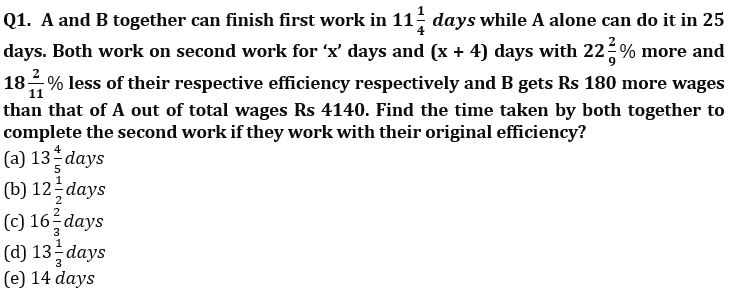
Q2. A man goes to market with a uniform speed and reach there in half an hour. He stayed there for half an hour and returned with ⅚th of speed with which he came. If his average speed for whole journey is 22.5 km/hr, then calculate distance between his home and market.
(a) 15 km
(b) 12 km
(c) 18 km
(d) 24 km
(e) can’t be determined
Q3. Two shopkeepers have same revenue on selling TV. If the price of TV for both goes down by 20% and sales of no. of set goes up by 5% for first and 20% for second. Find the difference between % change in total revenue for both shopkeepers.
(a) 10%
(b) 16%
(c) 4%
(d) 12%
(e) None of these
Q4. A retailer bought some eggs at Rs. 10 each. Out of these, some are rotten, and some are fresh. He sold fresh eggs at 50% profit and rotten eggs at 20% loss. In total he earns 8% profit. Find the probability of selecting one fresh egg from total eggs.
(a) 1/9
(b) 1/2
(c) 4/5
(d) 3/5
(e) 2/5
Q5. Two equilateral triangles and two parallelograms are cut down from a hexagon. If area of one equilateral triangle is 4√3 cm² then find the height of parallelogram?
(a) 2√3 cm
(b) √3 cm
(c) 4√3 cm
(d) 3√3 cm
(e) 8√3 cm
Q6. Work done by A, B, C and D is in arithmetic progression. C worked for 9 days and completed 30% work. A and B worked for 2 days and 3 days only. Find for how many days ‘D’ work to complete the remaining work if all four together can complete that work in 4 days.
(a) 12 days
(b) 10 days
(c) 8 days
(d) 6 days
(e) 4 days
Q7. If 8 boys and 12 girls can do a work in 10 days then in how many days, 12 boys and 12 girls can do the same work?
I. 6 boys and 15 girls can do the same work in 10 days.
II. Work done by 2 boys is equal to the work done by 3 girls.
III. 16 boys can do half of the same work in 5 days.
(a) Any one of them
(b) Only III and either I or II
(c) Only II and either III or I
(d) Any two of them
(e) Only either I or II
Q8. A can complete a piece of work in ‘a’ days by working ‘m’ hours per day, and B can complete the same work in ‘b’ days by working ‘n’ hours per day. If each of them reduces his working hours per day by 4 hours, each of them would take 5 days more to finish the work (m, n < 16). Which of the following is the time taken if A and B started working together such that A worked for ‘m’ hours per day and B worked for ‘n’ hours per day? (m, n,a, b are all integers)
I.5 days II.4 days III. 10/3 days IV. 2.5 days V.3 ½ days
(a)Both I and V
(b) I, III and IV
(c) Both I and III
(d) Both III and IV
(e) II, IV and V
Q9. Two persons Ramu and Shyam entered into a partnership. Find the profit of Shyam.
I. Ramu and Shyam started the business with a capital of Rs 12000 and Rs 9000 respectively.
II. Ramu invested the money for two months more than Shyam.
III. Ramu’s share in the total profit at the end of first year is Rs 1500 more than that of Shyam.
(a) Only I and II together
(b) Only I and III together
(c) Any two of them
(d) All statements are required
(e)Question can’t be answered even using all the statements
Q10. A firm has JCB of four models, P, Q, R and S. Four JCB’s, two of model Q and one each of models R and S together– plough a field in four days. Two model P JCB’s and one model R JCB together take six days to plough the same field. Three JCB’s – one each of models P, Q and R together – take eight days to plough the same field. If all four model together plough the field, then find number of days taken to plough the field?
(a) 12/7 days
(b) 36/7 days
(c) 24/7 days
(d) 48/7 days
(e) 18/7 days
Solutions
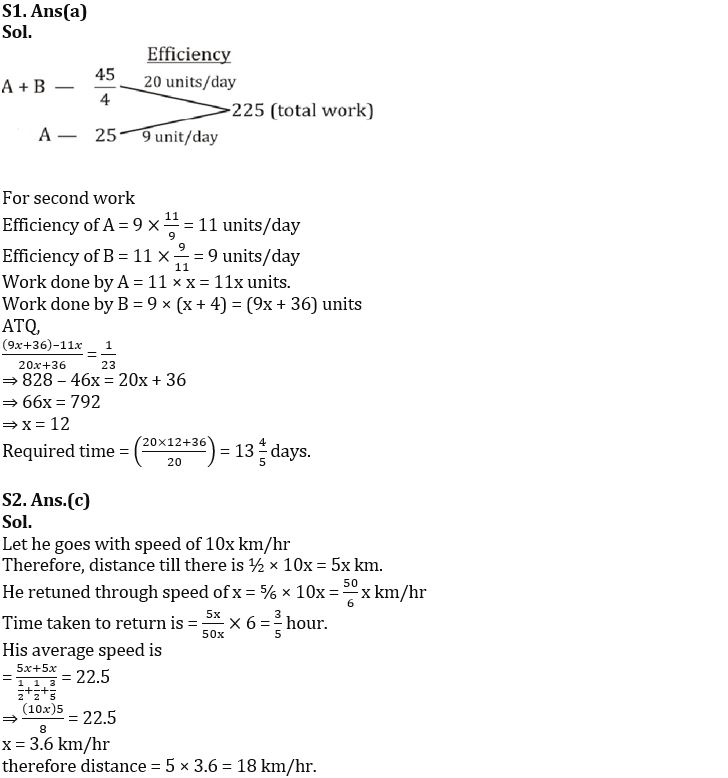
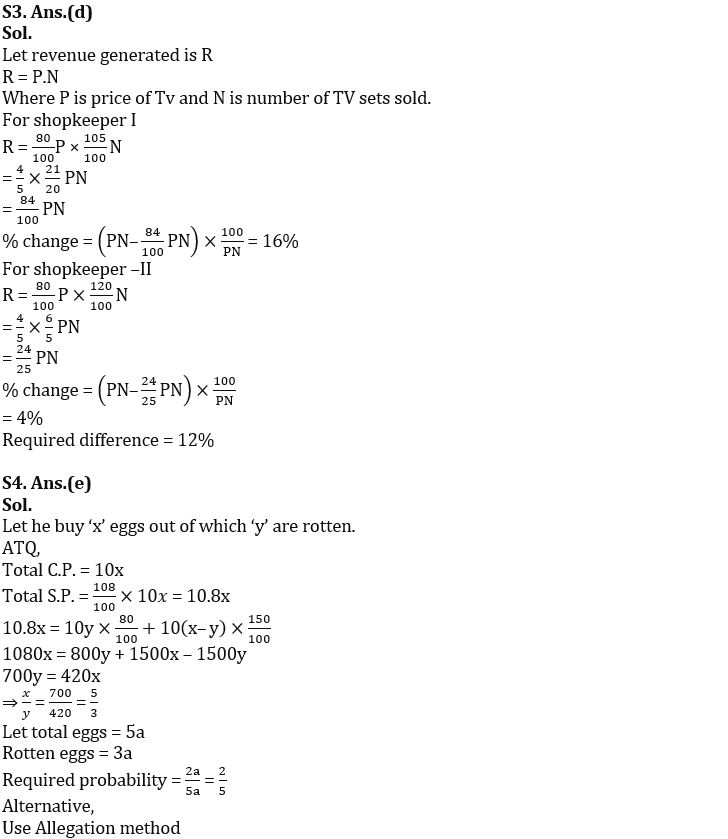
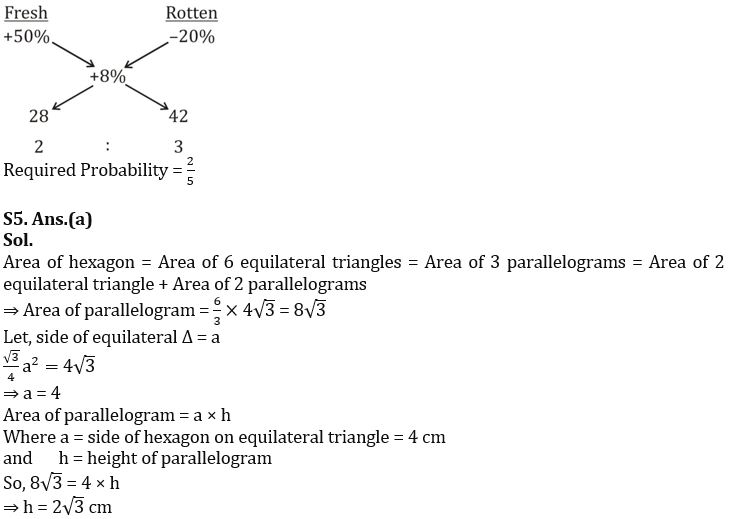
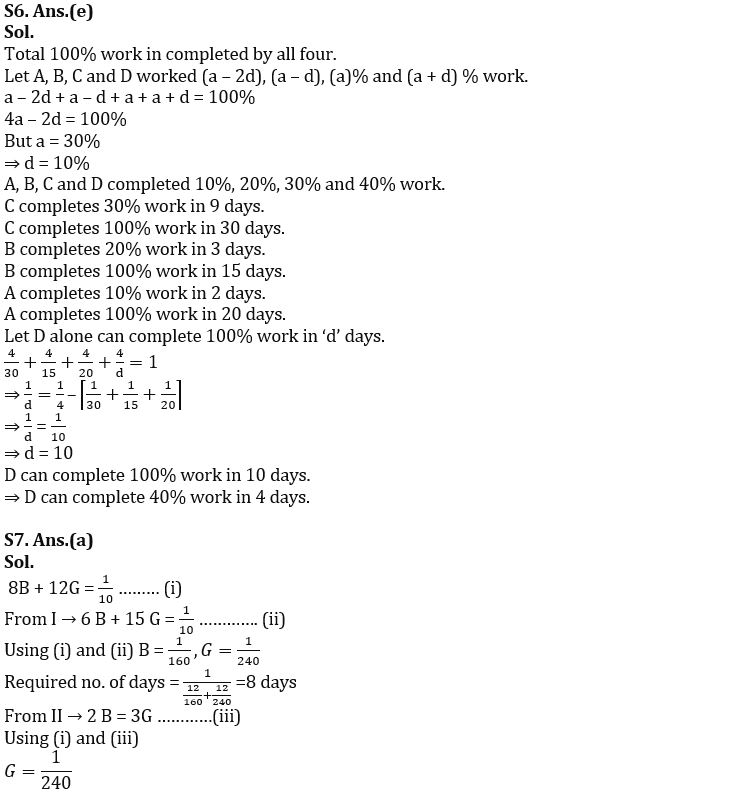
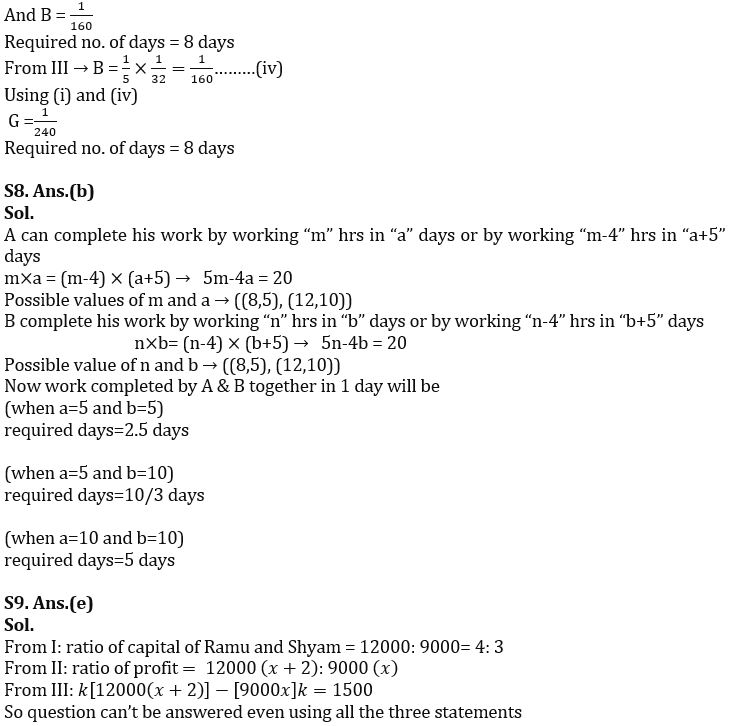
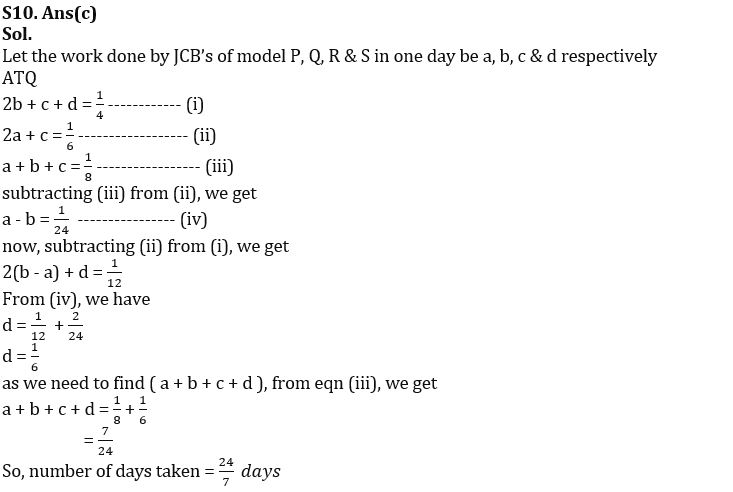





 Quantitative Aptitude Quiz For Bank Main...
Quantitative Aptitude Quiz For Bank Main...
 Quantitative Aptitude Quiz For Bank Foun...
Quantitative Aptitude Quiz For Bank Foun...




